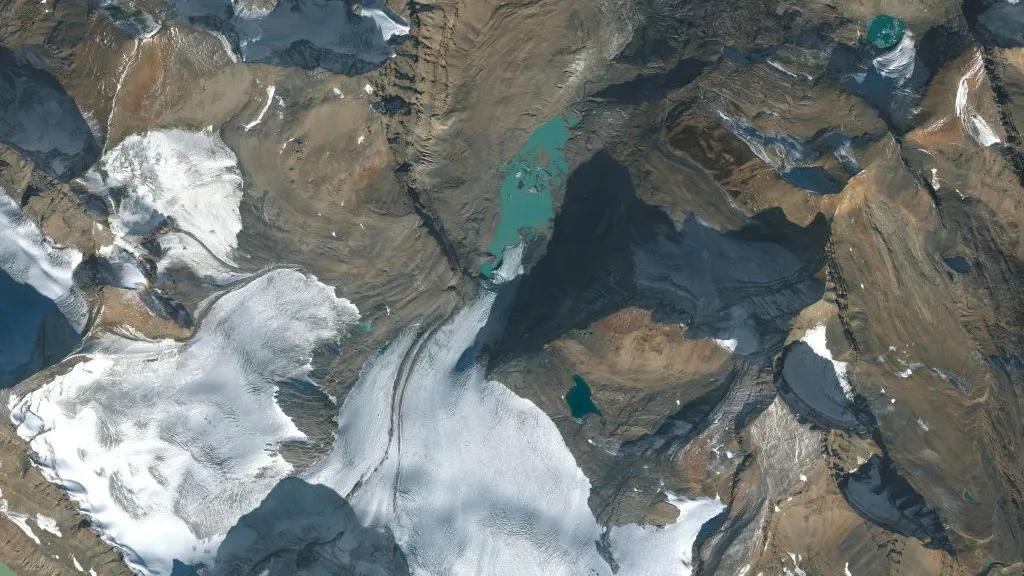
North America & Europe’s Glaciers Lost Unprecedented Ice in 4 Years: Study
A recent study has revealed that glaciers in North America and Europe have experienced an unprecedented loss of ice over the past four years. The research, published in the Journal of Geophysical Research: Earth Surface, found that glaciers in Washington, Montana, British Columbia, Alberta, and the Swiss Alps lost a staggering amount of ice between 2021 and 2024.
According to the study, the glaciers in these regions lost a total of 24.5 billion tons of ice per year on average, with the Swiss Alps glaciers losing a significant 1.7 billion tons annually. This loss of ice is not only alarming but also a stark reminder of the devastating impact of climate change on our planet.
The researchers used satellite data to track the changes in the glaciers’ mass between 2010 and 2024. They found that the glaciers had shrunk by up to 13% over the past 14 years, with a significant acceleration in the rate of ice loss between 2021 and 2024.
The study’s lead author, Dr. Tom Wagner, a glaciologist at the University of Washington, explained that the unprecedented loss of ice is due to the rapid warming of the atmosphere and oceans. “The Arctic is warming at a rate that is twice as fast as the rest of the world, and this is having a significant impact on the glaciers in North America and Europe,” Dr. Wagner said.
The findings of the study are concerning, as glaciers play a crucial role in regulating the Earth’s climate. They act as natural reservoirs of freshwater, and their melting can have significant impacts on sea levels and ocean circulation patterns.
The study’s results are also consistent with other research that has shown a significant acceleration in the rate of ice loss from glaciers around the world. For example, a study published in the journal Nature found that the world’s glaciers are losing ice at a rate that is 60% faster than previously thought.
The implications of the study’s findings are far-reaching, and they highlight the urgent need for action to address climate change. As the world continues to warm, the loss of ice from glaciers will only continue to accelerate, leading to more frequent and severe heatwaves, droughts, and storms.
So, what can be done to mitigate the impact of climate change on glaciers? One key step is to reduce greenhouse gas emissions, particularly carbon dioxide, which is the primary driver of global warming. This can be achieved through a transition to renewable energy sources, increased energy efficiency, and the protection and reforestation of natural carbon sinks such as forests.
Another important step is to support conservation efforts that protect glaciers and their surrounding ecosystems. This can include the establishment of national parks and protected areas, as well as the promotion of sustainable tourism practices that minimize the impact of human activity on glaciers.
Finally, it is essential to continue monitoring the health of glaciers and to support research into the impacts of climate change on these critical ecosystems. This can include the use of satellite imagery and other remote sensing technologies to track changes in glacier mass and extent, as well as the deployment of field-based research stations to monitor glacier dynamics and ice flow.
In conclusion, the study’s findings are a stark reminder of the urgent need for action to address climate change. The loss of ice from glaciers in North America and Europe is a critical issue that requires immediate attention and action. By reducing greenhouse gas emissions, supporting conservation efforts, and continuing to monitor the health of glaciers, we can work together to mitigate the impact of climate change on these critical ecosystems.
Source:
Wagner, T. J. W., et al. (2025). Unprecedented mass loss from glaciers in North America and Europe between 2021 and 2024. Journal of Geophysical Research: Earth Surface, 10.1029/2025GL115235.
https://agupubs.onlinelibrary.wiley.com/doi/10.1029/2025GL115235






